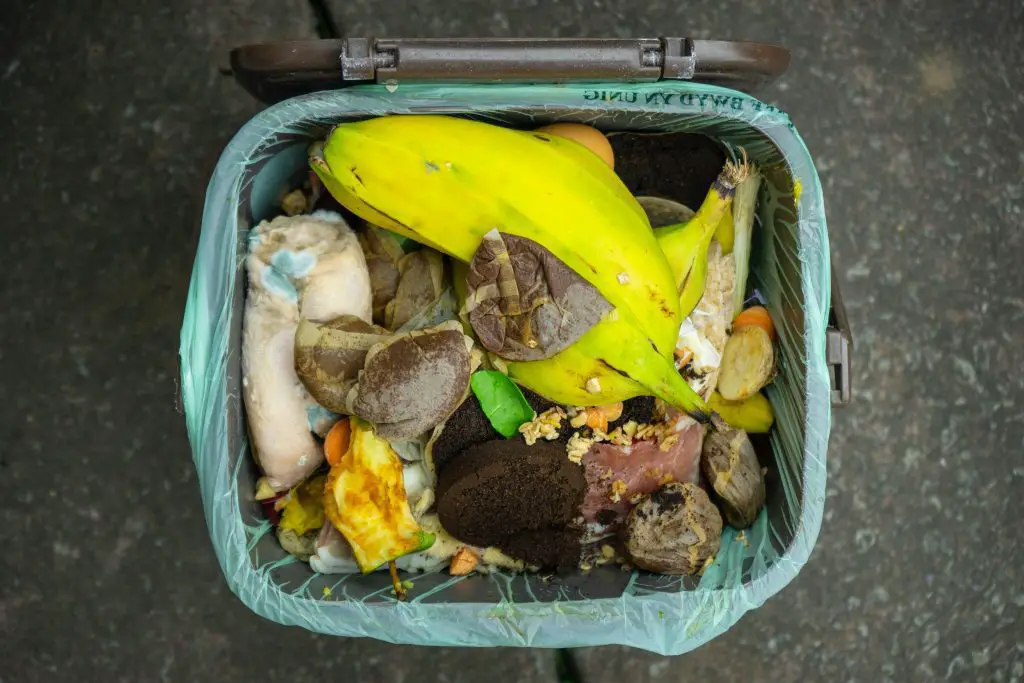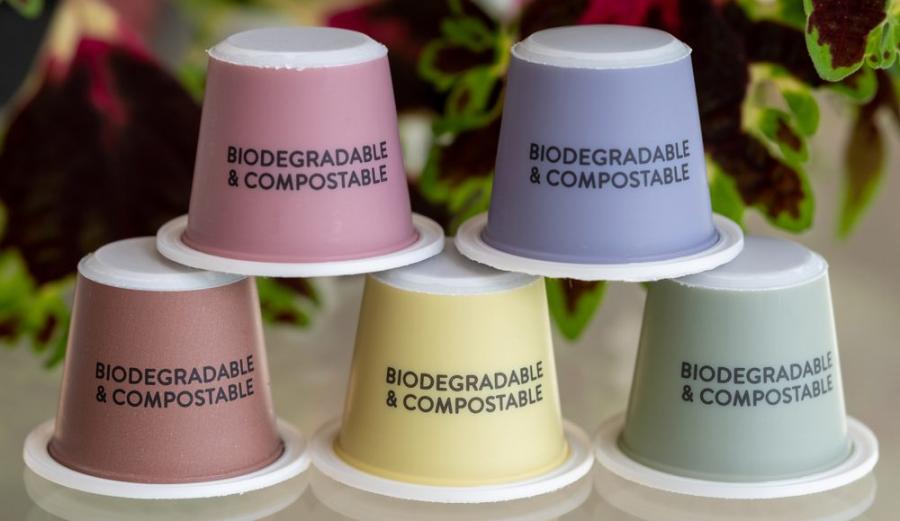Biodegradable vs compostable are two labels that you might see on food packages or on different waste disposal bins. Figuring out the differences between these terms can be confusing, but we’re here to help.
As it turns out, all compostable items can also be considered biodegradable, but not every biodegradable item can be considered compostable. The difference lies in the way they decompose, their production materials, and the residual elements left behind after decomposition occurs.
What is biodegradable?
A biodegradable item is one that will break down quickly and safely into compounds that won’t have a harmful effect on the planet. This breakdown is typically initiated by microorganisms, such as fungi and bacteria, which help break down an object’s structure into simpler components. These simple components include carbon dioxide, biomass, and water. The process of biodegradation can also involve oxygen, but it isn’t necessary. However, biodegradation tends to occur more quickly than without it when oxygen is present.
Biodegradation is a process that can be fast (like with fruit or vegetable scraps that break down in only a few days), or it can be slow (plastic bags can take over 500 years to break down). The length of time for an object’s biodegradation process depends on the object’s chemical makeup and the way the object is stored. Storage factors like the presence of light, temperature, water, and, as mentioned, oxygen all have an impact on how long biodegradation takes. An object that takes an incredibly long time to break down, like aluminum or styrofoam, is typically considered non-biodegradable.
While many consumer products today are labeled as “biodegradable,” it’s important to note that not all of them will actually biodegrade naturally. In fact, the majority will only biodegrade under specific conditions that can be achieved during composting.
For reference, here is a list of the time it takes many common items to biodegrade:
- Fruits and veggies — Between 5 days and 1 month
- Paper — Between 2 to 5 months
- Cotton items, like T-shirts — ~6 months
- Leaves – 1 year
- Fabric made with Nylon — ~35 years
- Aluminum cans — ~90 years
- Styrofoam cups or plates — >500 years
- Plastic bags — >500 years
What is compostable?
A compostable item is something that can biodegrade under the circumstances driven by human beings. Where biodegradation occurs independently, regardless of human assistance, composting is reliant upon human intervention.
During the process of composting, humans supply water, oxygen, and organic material to help optimize composting conditions, and then microorganisms break down the organic material. It can take anywhere from just a few weeks to multiple years to fully biodegrade something during composting, and the timeline depends entirely on the object in question.
How many types of composting are there?

In a broad sense, there are two core types of composting: commercial and residential.
Commercial composting is a larger operation that allows for the breakdown of more complex products than those able to be composted at home. This process includes screening incoming items and then sorting them into two piles: organic and inorganic. Once the items have been sorted, they are broken down into smaller pieces with tools called grinders or chippers. Then the optimal composting conditions are introduced to begin the composting process. This means that factors like oxygen, temperature, and moisture levels are controlled and adjusted.
Residential composting is a smaller-scale operation that is very easy to achieve on your own. To do it, you simply need to collect your food scraps in a designated bin (or outdoors, in a compost pile). You can add your yard waste to the compost and occasionally stir it to help promote the breakdown of organic materials. When doing residential composting, you should never try to compost things like meats or cheeses (including fish) because the conditions required to compost them are not achievable in your home.
Biodegradable and compostable plastics
As humans are becoming more aware of the impact that their purchases and products have on the earth, things like biodegradable and compostable plastics are becoming more and more common. These are seen as a more attractive option than petroleum-based plastics, and these new plastics are often used for disposable cutlery, phone cases, and much more.
However, as with most things, these biodegradable and compostable plastics have their fair share of drawbacks. Here are some of the pros and cons to consider about them:
Pros of biodegradable and compostable plastics
- Biodegradable and compostable plastics— also called bioplastics— are plant-based, unlike other types of plastic.
- Manufacturing these plastics seems to have a lower carbon footprint than non-bioplastics, although this has not been categorically proven true.
Cons of biodegradable and computable plastics
- To process of breaking down these plastics is intense and only possible at industrial facilities capable of producing intense heat. Without this high level of heat, these plastics would take decades to break down on their own.
- These plastics still biodegrade slowly in marine conditions, meaning that they still contribute to the massive plastic problem in the oceans.
- You must recycle these plastics separately from your other recyclable materials.
Is it better to purchase biodegradable or compostable products?
Purchasing compostable or biodegradable products is a great way to reduce your environmental impact, but it requires some attention to detail. Compostable items are typically the most helpful if your goal is to minimize your carbon footprint, but not all compostable items are created equal. Each item requires specific circumstances to be composted, so make sure you read all of the labels and descriptions clearly if available. Take a look at some of our articles on biodegradable vs compostable products we love!
- Smart and Practical Ideas for Making Your Kitchen More Sustainable in 2022
- The Best Biodegradable & Eco-Friendly Doormats: 10 Options
- The Best Eco-Friendly Trash Bags (Reusable, Biodegradable and Compostable)
- Why You Should Invest in Biodegradable Diapers
- Why Biodegradable Baby Wipes Are In!
- How To Compost: A Definite Guide
Final Thoughts
The terms biodegradable and compostable are everywhere these days, and although similar, they mean different things. Compostable items are all biodegradable, but biodegradable items are not all compostable. Be sure to read the labels carefully on items you purchase to determine whether it is compostable or biodegradable.
